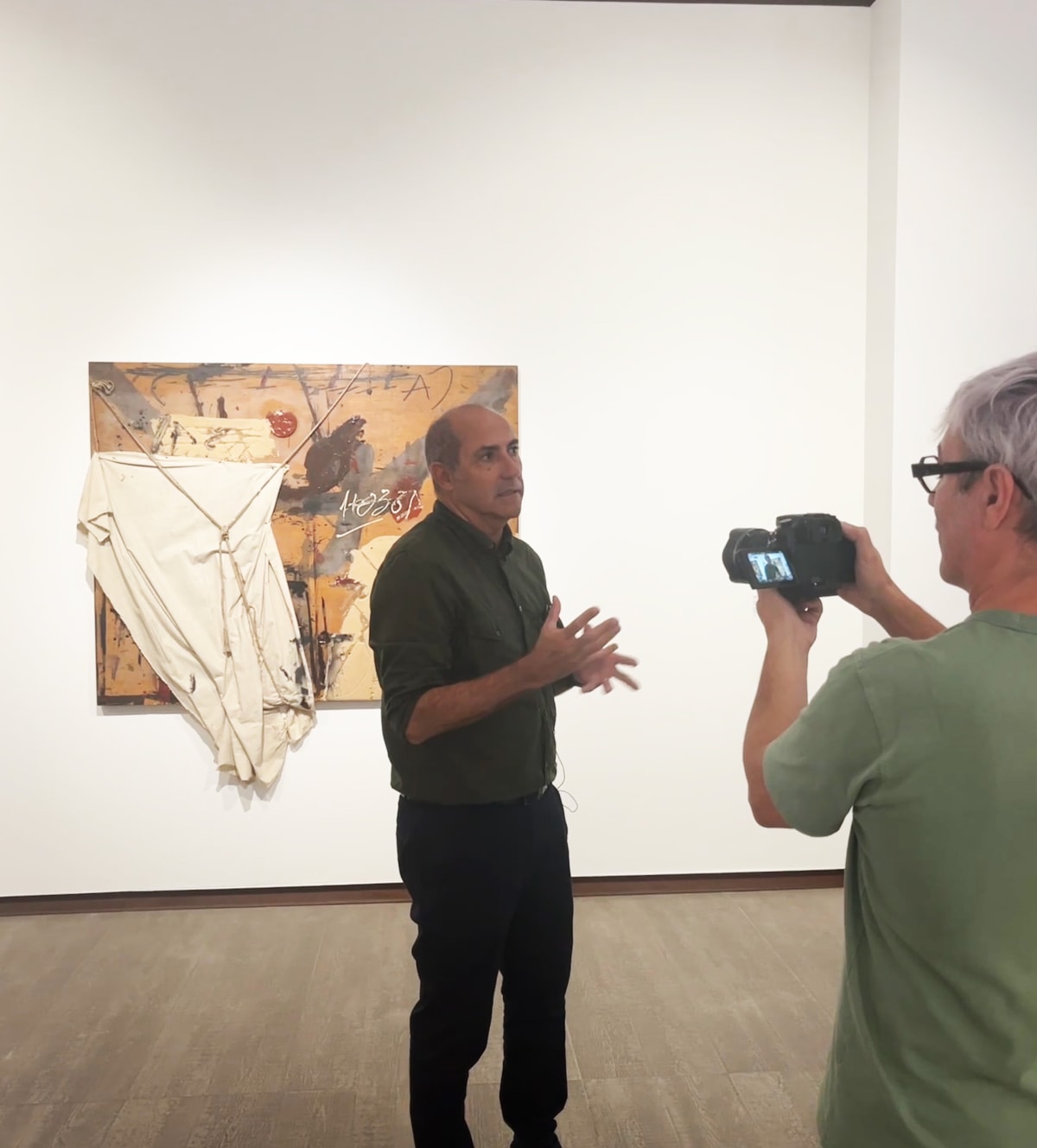Tàpies i Miró. We come from a silence: PARIS - BARCELONA
Past exhibition
Overview
This exhibition, which we are presenting simultaneously in the Paris and Barcelona galleries, brings together in an unprecedented manner two global and modern artists, intensely linked to our culture and fundamental in the gallery’s history: Antoni Tàpies (1923-2012) and Joan Miró (1893-1983). The works exhibited cover the period from 1963 to 1981.
On the occasion of the centenary of the birth of Antoni Tàpies, we present a double exhibition which assembles a selection of works by Tàpies and Miró allowing a partial reconstruction of the aesthetic which, without the need to be explicit, became a sign of political opposition. In the exhibition’s curatorial statement, Carles Guerra discusses the peculiarities of the commitment that Tàpies and Miró acquired in a country governed by an authoritarian regime, and how this was interpreted in their work: “They were both committed to a practice of art which went beyond aesthetic boundaries and became an ethical benchmark”. Indeed, their painting could not ignore historical circumstances. Their lives and their militancy thus united them at historical moments, such as in the lock-in of intellectuals at Montserrat in 1970 or the works that they both dedicated to Salvador Puig Antich following his execution in March 1974. They were therefore two artists who, although belonging to different generations, were characterized by a complex, rich and fascinating modernity as a result of their experience of the Franco dictatorship.
In these rooms we highlight two pieces by Joan Miró. On the one hand, the Sobreteixim (1960) is incipient evidence of investigation with the intervention of textile techniques and materials in what we could call the second “assassination of painting”, this time led by Miró at the end of the 1960s and throughout the following decade, during which he produced a series of monumental tapestries, in addition to the famous 1973 burnt canvases. On the other hand, Peinture (Painting) recalls a cloth to dry the painter’s brushes, which radicalizes the very subject of the painting. Indeed, Tàpies also did something similar during those years. The 1969 Caixa d’embalar (Packing Case) and the 1975 Composició amb corda i roba (Composition with Cloth and Rope) “boldly simplify the state of modern painting to convert it into a pure and simple object which, in the case of Tàpies, goes even deeper into the programme of reinvention of painting that he started with the materials”, in the words of Carles Guerra. In the last room you can enjoy a screening of the full version of the film El sopar (Dinner) (1974-2018), by Pere Portabella, which, as well as the initial part in Catalan and the conversation in Spanish, includes the addition made by Portabella in 2018. We also include a small example of the collaboration carried out by the two artists with Raimon at the end of the Franco regime, when posters, book covers and album sleeves helped disseminate a gestural aesthetic that was almost equivalent to a signature or a manifesto.
Installation Views
-
 Barcelona, exhibition view, Tàpies i Miró. Venim d'un silenci, 2023, photo credit: Foto Gasull
Barcelona, exhibition view, Tàpies i Miró. Venim d'un silenci, 2023, photo credit: Foto Gasull -
 Barcelona, exhibition view, Tàpies i Miró. Venim d'un silenci, 2023, photo credit: Foto Gasull
Barcelona, exhibition view, Tàpies i Miró. Venim d'un silenci, 2023, photo credit: Foto Gasull -
 Paris, exhibition view, Tàpies et Miró. Nous venons d'un silence, 2023
Paris, exhibition view, Tàpies et Miró. Nous venons d'un silence, 2023 -
 Paris, exhibition view, Tàpies et Miró. Nous venons d'un silence, 2023
Paris, exhibition view, Tàpies et Miró. Nous venons d'un silence, 2023
News








